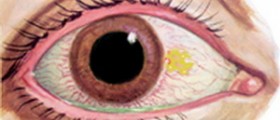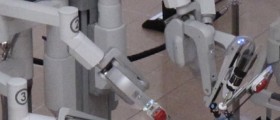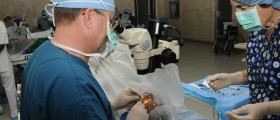
Introduction
Laser eye surgery is performed to correct vision in the people who are suffering from nearsightedness, farsightedness or astigmatism. This kind of surgery reshapes the cornea and allows the light to be properly focused onto the retina. Laser eye surgery can be flap laser eye surgery and flap-less laser eye surgery.
Possible Side Effects of LASIK
Postponed epithelial healing is one of the potential side effects of this surgery. The normal length of epithelial healing ranges from 3 to 5 days. During the healing process a patient may complain about itchiness and slight discomfort. If these symptoms tend to linger after 5 days this means that the healing process has been prolonged.
Diffuse Lamellar Keratitis is an inflammatory process which develops under a flap and may happen in both LASIK and IntraLASIK procedures. This form of cornea inflammation microscopically presents with sand-like structures under the flap. The complication commonly occurs the day after the surgical procedure. The patient is administered special eye drops that fight inflammation and they are applied until the inflammatory process has healed.
Another possible complication includes dryness of eyes. This complication tends to disappear gradually over the months but in some patients is so severe and even causes blurred vision. If eyes were dry prior the operation it is most likely that the patient will suffer from this problem even after the surgical treatment. Flap procedures can cause dryness of eyes more than flapless procedures. This complication is initially treated with artificial tears. During the night a patient is advised to use special ointments.
Epithelial ingrowth is another complication and it is present only in flap procedures. Namely, the epithelium from the surface can migrate under the flap and ingrow. This complication is easily treated but carries additional risk of re-occurrence.
Flap striae and wrinkles are fine folds that occur mostly if a person has been suffering from increased level of nearsightedness. Unlike microstriae, macrostriae can be seen by naked eye and they create fingerprint-like pattern on the operated area. This happens because the patient rubs the eye during the process of healing.
Halos around the light together with glare can be other possible complications of laser eye surgery. These problems may exist even prior the operation and the very surgical procedure can enhance them.
Haze is one more complication and it does not occur in case of flap procedures so often. In mild cases haze does not interfere in patient's vision. On the other side severe haze can lead to serious problems with vision such as blurred vision.
Laser eye surgery is rather precise. Still, overcorrections or even undercorrections are possible.
Pain is a normal reaction to the surgery. Sensitivity to light is also normal right after the surgical procedure. These problems usually vanish within several days after the surgery.

















Your thoughts on this
Loading...